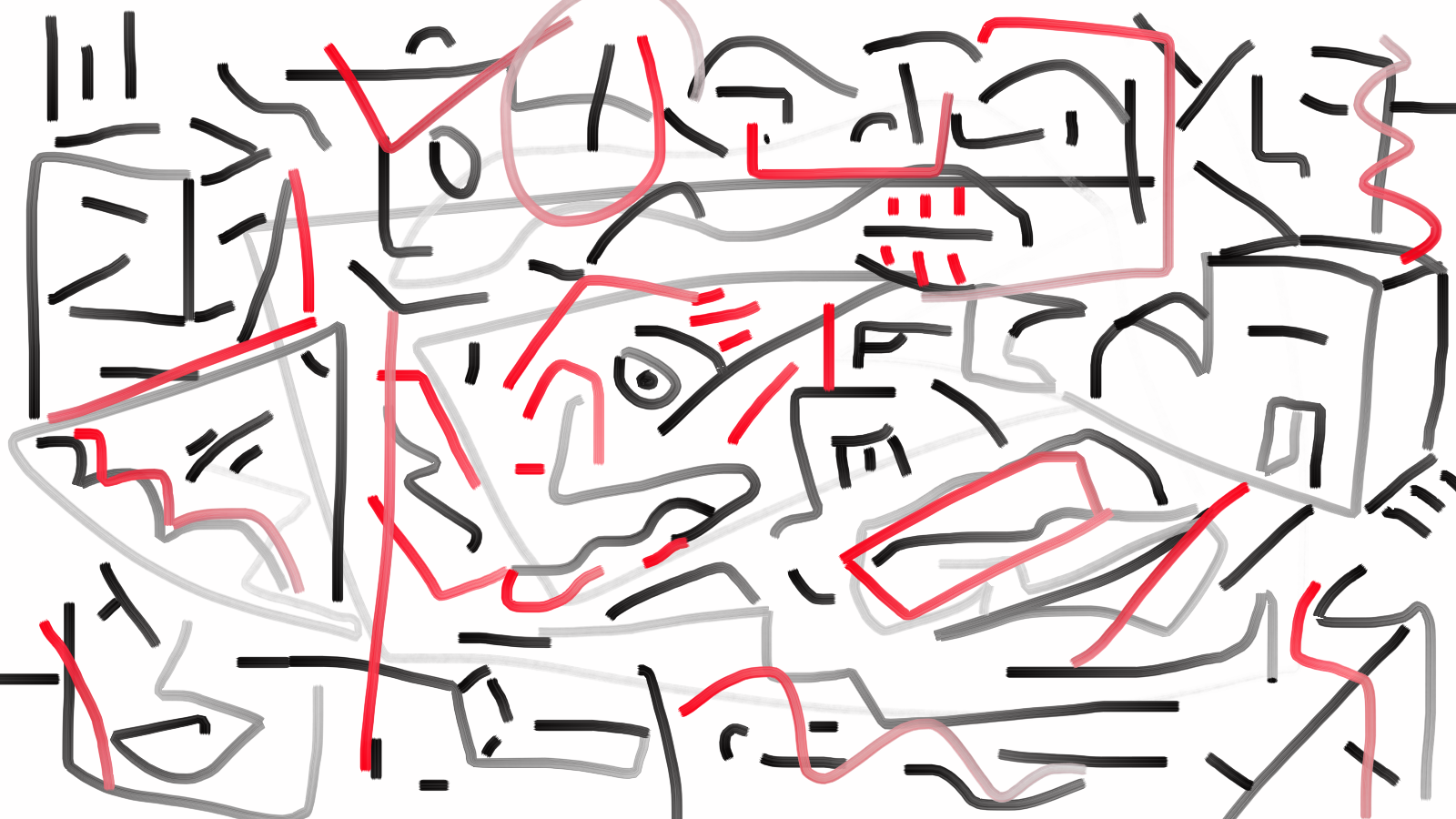
Dear Crypto-Art fans,
in part three of my ongoing series about the conjunction of art and blockchain technology, I want to talk about a dApp called Digital Art Chain, which enables you to publish your digital art (and music) as an ERC721 token on the Ethereum blockchain.
If you haven't already, you might also want to check part 1 and part2 of the series, where I talked about Bitmark and Ascribe.io. Although Ascribe was my previous favorite, they recently disabled new user sign-ups. Therefore I had to look for different ways of issuing and tokenizing my digital art.
Digital Art Chain
I discovered this new service while browsing at OpenSea, which describes itself as "The world’s largest digital marketplace for crypto collectibles." They suppose to already have more than 1.2 million digital assets like CryptoKitties, CryptoPunks or Eth.Town heroes listed on their site. You can also find various digital-art from crypto-art related trading platforms like KnownOrigin and SuperRare over there.
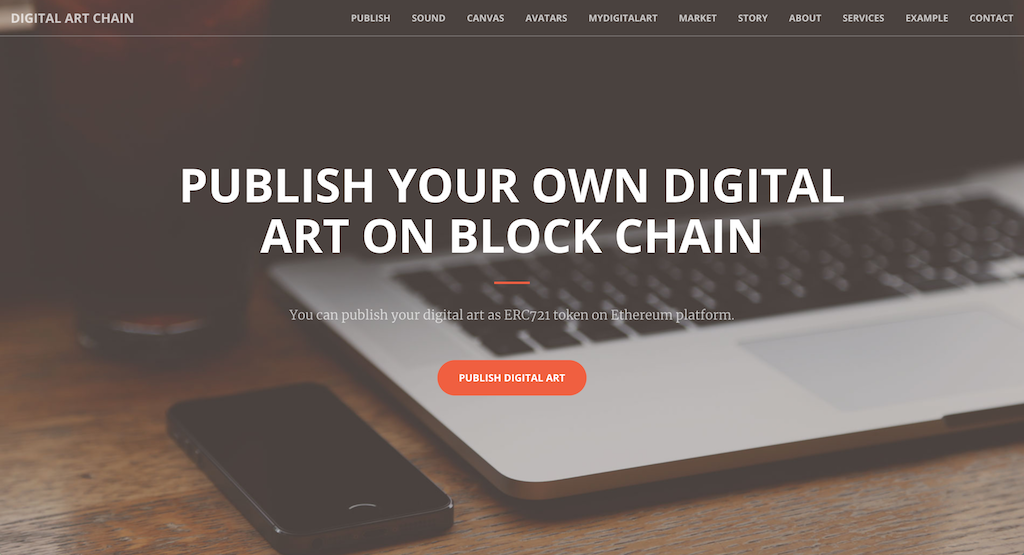
If you visit the Digital Art Chain website, you'll get this short explanation of their service:
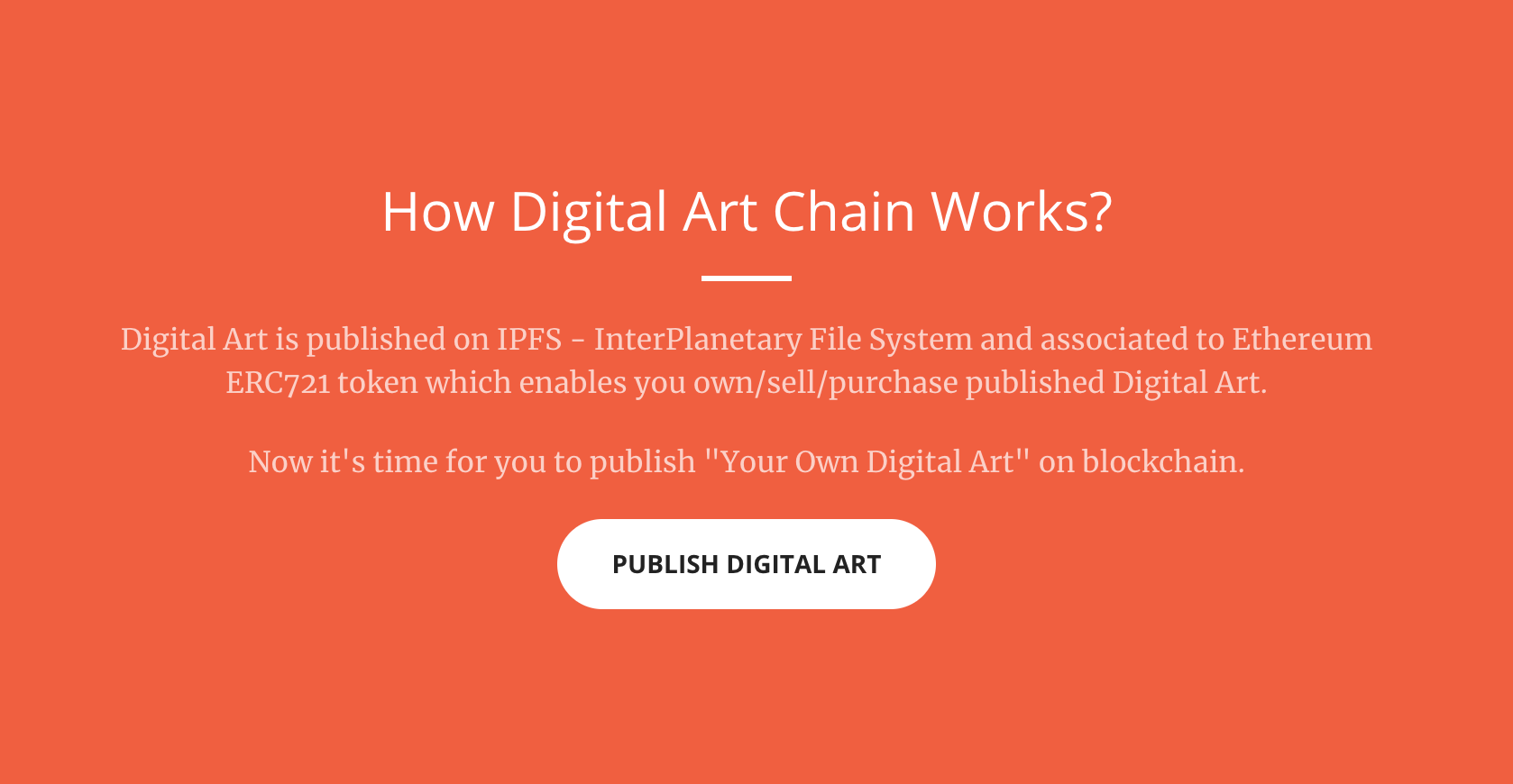
IPFS
You may have heard these terms before, but in case you're still wondering, I will give you a short explanation.
IPFS is a distributed file system that seeks to connect all computing devices with the same system of files. In some ways, this is similar to the original aims of the Web, but IPFS is actually more similar to a single bittorrent swarm exchanging git objects. [...] IPFS could become a new major subsystem of the internet. If built right, it could complement or replace HTTP. It could complement or replace even more. It sounds crazy. It is crazy.
Steem based video and audio streaming services like DTube and DSound already make use of IPFS to store and distribute their user's content.
ERC721 or NFTs (Non-Fungible-Tokens)
The ERC-721 protocol is a standard for Non-Fungible Tokens on Ethereum. In contrary to the well known ERC20 standard, NFTs represent something unique, can't be devided and are thus not interchangeable. This way they can help proving authenticity and ownership in digital art.
While most tokens are fungible (every token is the same as every other token), ERC-721 tokens are all unique. Think of them like rare, one-of-a-kind collectables.
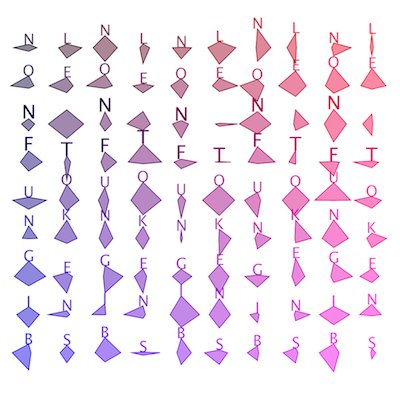
Digital Artwork called "Non-Fungible" by HEX0x6C, that I've recently won in a twitter giveaway.
ERC20 vs. ERC721
Here is a very good explanation, I found at The Bitcoin Pub forum:
Many tokens - and indeed cryptocurrencies - are fungible. If you send someone a Bitcoin, and get one back, you wouldn’t notice any difference.
A lot of the time, fungible tokens are built using a standard called ERC-20. For the sake of simplicity, let’s imagine each of these tokens is a $10 bill. If you sent a token to someone, and got another one back a week later, they would be identical.
This all changes with non-fungible tokens, many of which are ERC-721 compliant.
These can be compared to baseball cards, as each has unique information and varying levels of rarity. If you were to accidentally send one of these tokens to someone, and get a different ERC-721 token back, you might be very upset.
There’s one more crucial difference you need to bear in mind.
Fungible tokens are divisible – meaning you can send a fraction of one ERC-20 token. (Like cash, where you can pay with a $10 bill and get change.) On the other hand, non-fungible ERC-721 tokens cannot be divided and must be bought or sold whole. (Like baseball cards, where no one in their right mind would want to buy half.)
ETH and Metamask
Now that you've got an idea of the concept of NFTs, you might want to tokenize a digital-artwork or soundfile by yourself. The only thing you'll need is the well known metamask browser extension (available for Chrome, Firefox, Opera, and the new Brave browser) and some ETH to cover the gas fees. The Digital Art Chain service itself is free of charge.
If you click on puplish you will be taken to an input form, where you'll be able to upload a JPEG, PNG or GIF file.
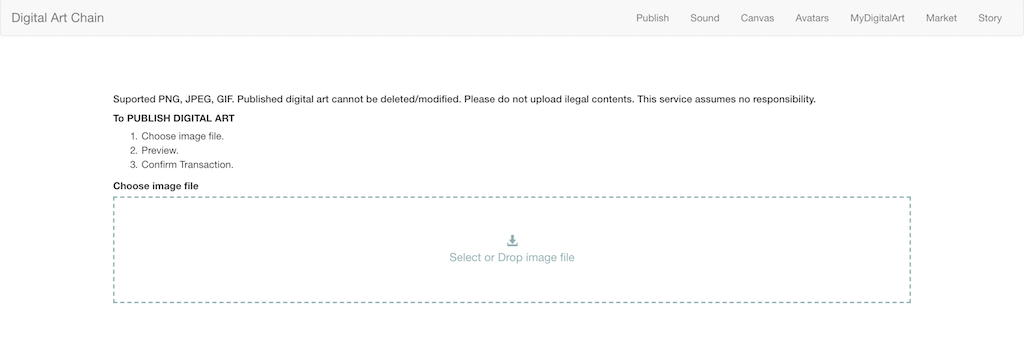
After the file has successfully uploaded to IFPS, the metamask extension will pop-up and ask you to pay a small Gas fee for the token creation. I would suggest to check the Gas-price at ETH Gas Station and eventually adjust it in metamask, if you don't want to risk waiting a long time for your transaction being confirmed.
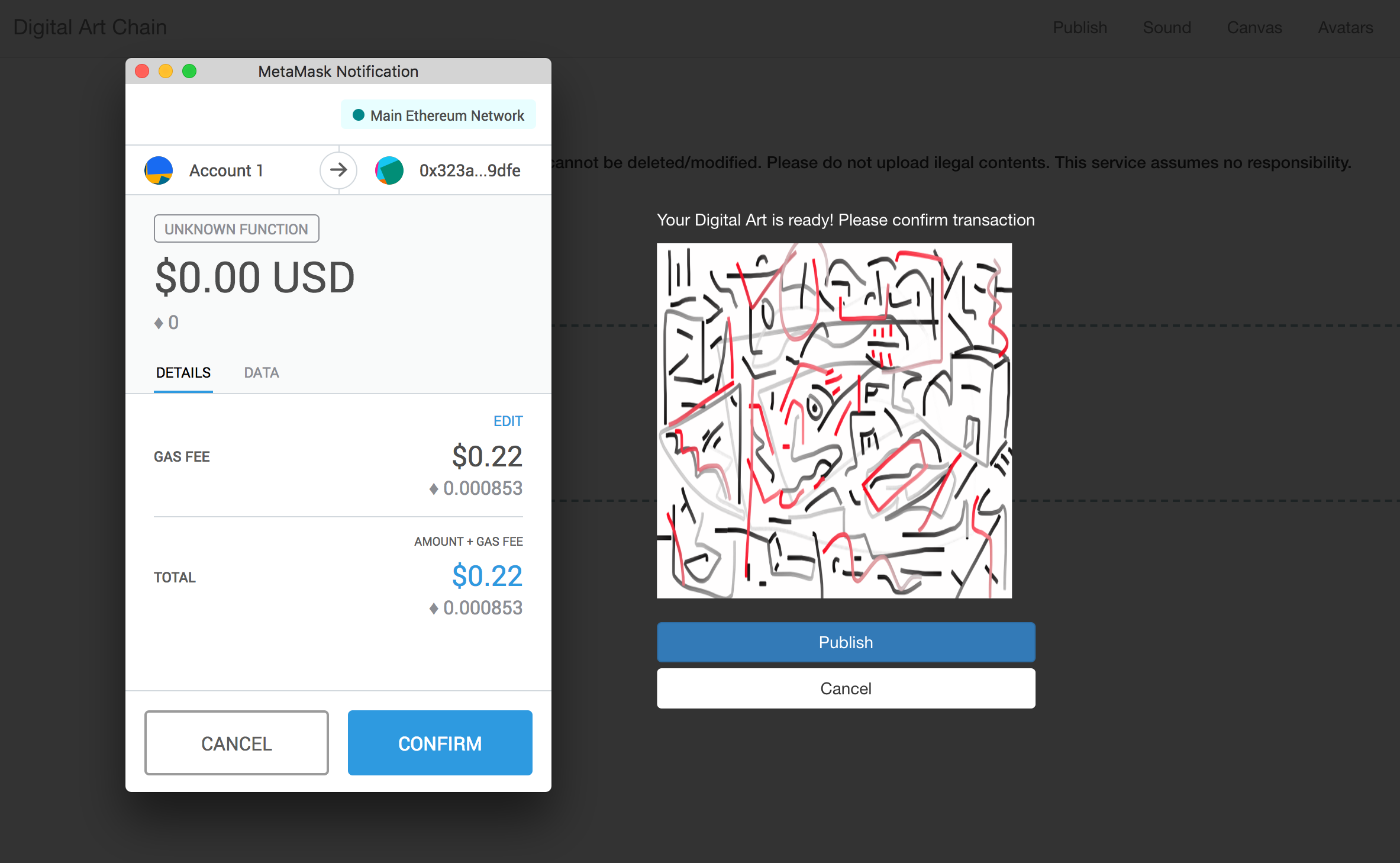
When you've sent the transaction, you will receive a message containing the transaction hash, which you can monitor using an ETH block-explorer like Etherscan.

After the transaction is confirmed by the Ethereum network, you then will be able to see your digital-artwork under the MyDigitalArt tab.
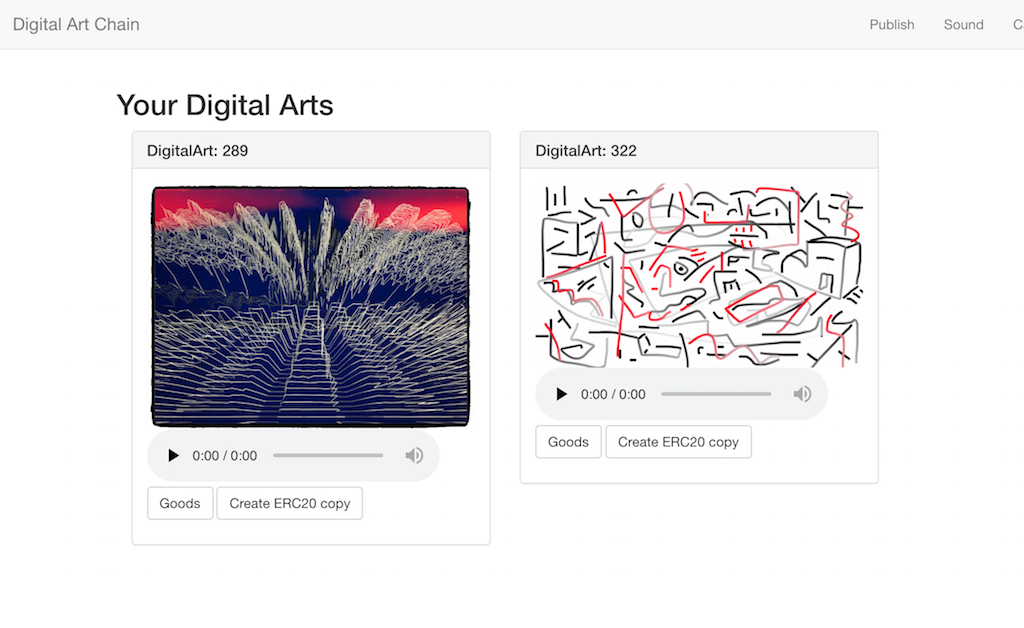
Buy Goods
You could even order some T-Shirts, mugs, hoodies or iPhone cases with your printed digital-art right from the website. They integrated a service called CryptoGoods for that usecase.
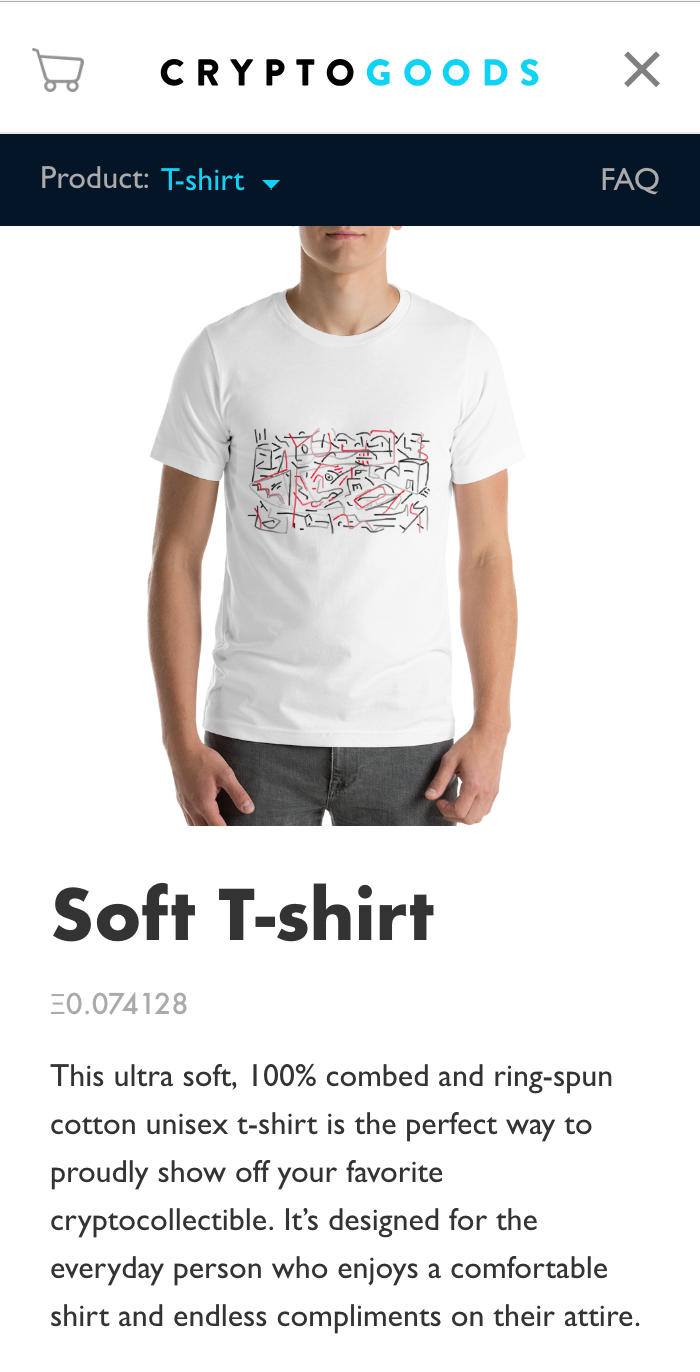
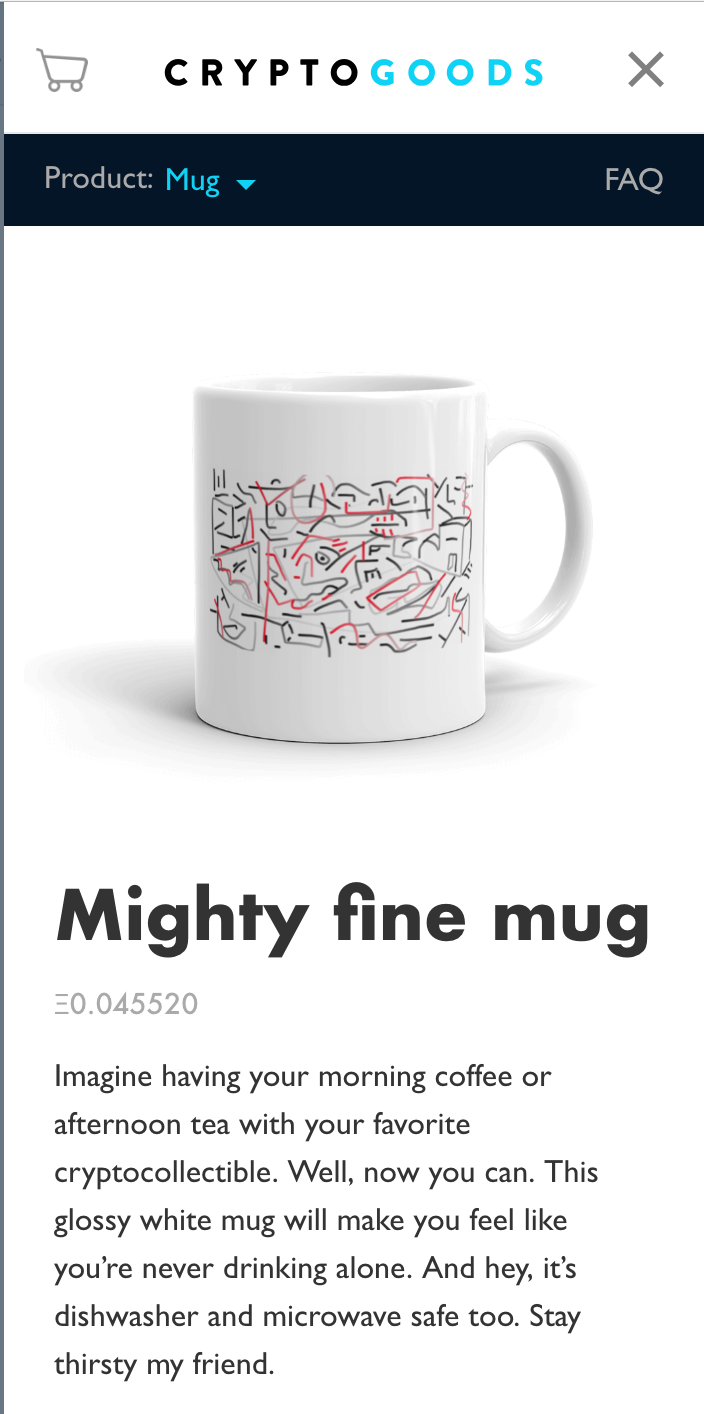
OpenSea
If you plan to sell your digital artwork, you can also find it at your OpenSea account, from where you can set up an auction or provide an instant buy price in Ether. OpenSea only takes a small 1.25 % service fee for every successful trade.
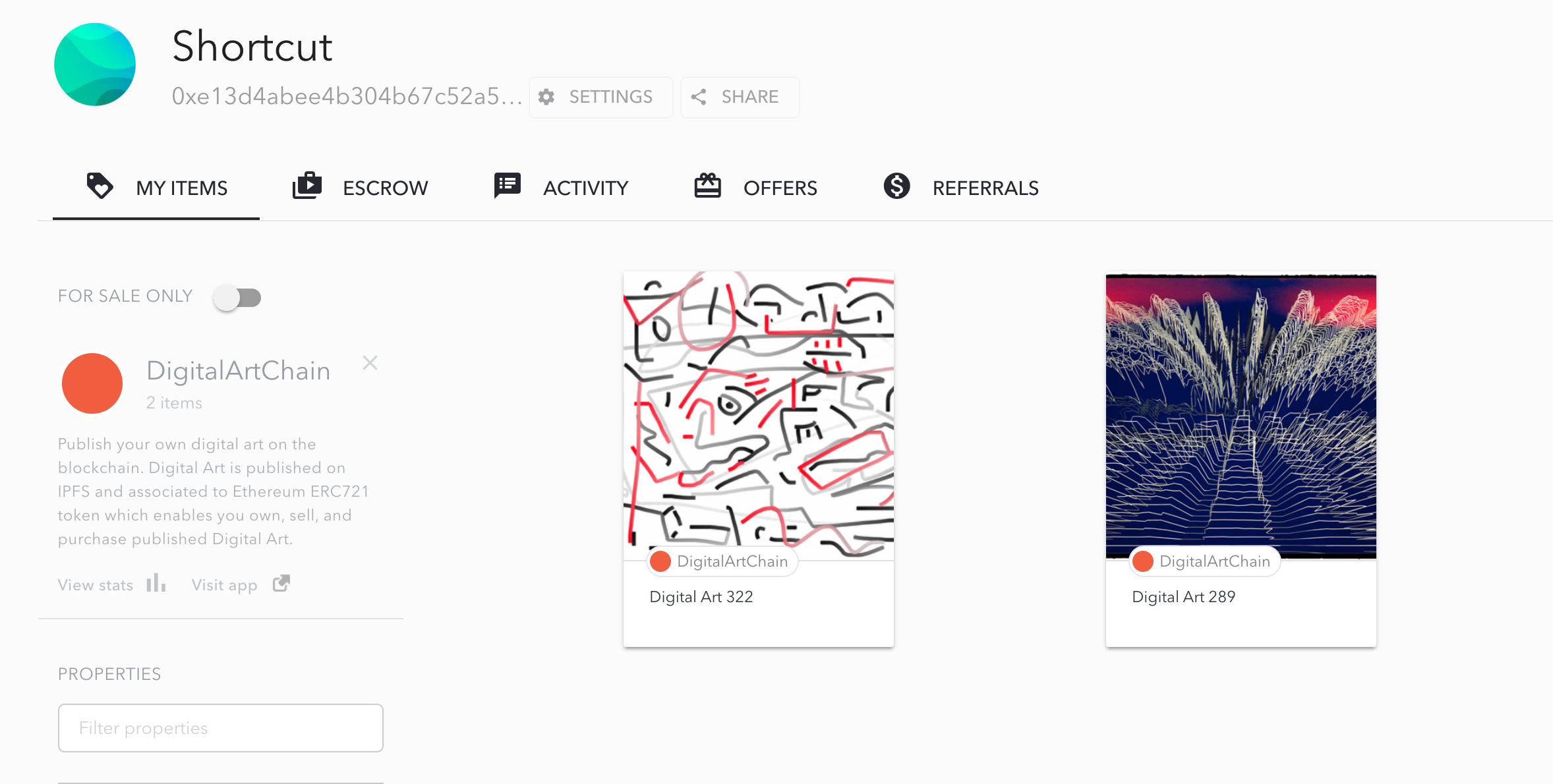
The only downside, that I'd like to see improved in the future, is the missing possibility to edit the description of the token.
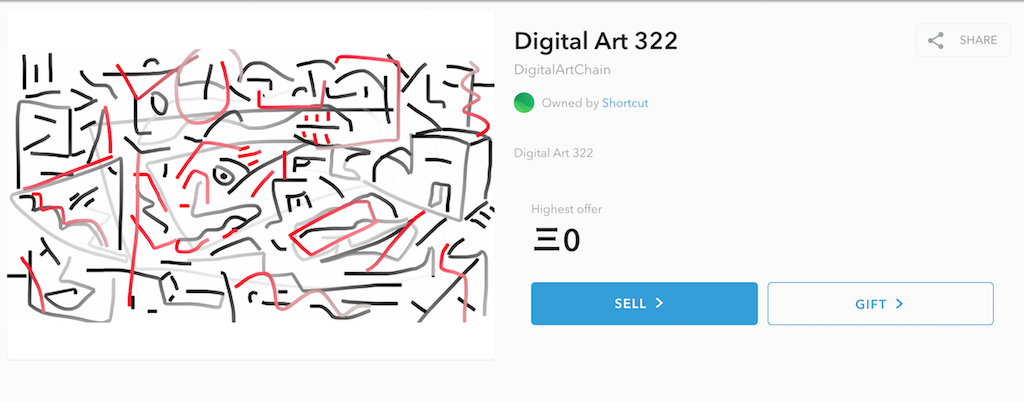
You can find my artwork here and although I didn't set a price for this artwork, you can always make me an offer.
TL;DR
Digital Art Chain is a fantastic free service, that enables you to convert your digital art and sound files in Non-Fungible (ERC721) Ethereum tokens and easily sell them at OpenSea.
The platform even provides some basic tools to create your own digital art, like a simple drawing interface and an avatar generator, which you could instantly tokenize after creation.
I was especially blown away by the possibility to let every Non-Fungible token talk, but that's probably stuff for my next post about art and blockchain.
Art and Blockchain
Please also check my previous posts about art and blockchain:
Part 1 - VRintelligentART and Bitmark
Part2 - XCOPY Art and Ascribe (which has been disabled new user sign-ups)
Thanks a lot for reading!

